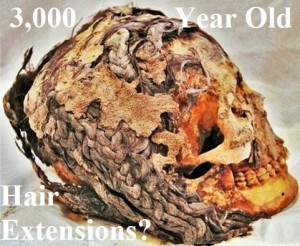The Luxor Obelisk is a 23 metres (75 ft) high Egyptian obelisk standing at the center of the Place de la Concorde in Paris, France. It was originally located at the entrance to Luxor Temple, in Egypt.

–Wiki
The Luxor Obelisk is over 3,000 years old and was originally situated outside of Luxor Temple, where its twin remains to this day. It first arrived in Paris on December 21, 1833, having been shipped from Luxor via Alexandria and Cherbourg, and three years later, on October 25, 1836, was moved to the center of Place de la Concorde by King Louis-Phillipe. It was gifted to France by Muhammad Ali, Ruler of Egypt.
Thanks for sharing!
The obelisk, a yellow granite column, rises 23 metres (75 ft) high, including the base, and weighs over 250 metric tons (280 short tons). It is decorated with hieroglyphs exalting the reign of the king Ramses II.
The remaining obelisk at Luxor Temple Pylon.

–By Ad Meskens
Given the technical limitations of the day, transporting it was no easy feat: The French government ordered a purpose built seagoing lighter built by the Toulon naval yard; this 49 metres long, flat bottomed, three masted ship named the Louqsor was sailed up the Nile to Luxor where 300 workmen dug a canal to allow the ship to come close to the obelisk. The team of French seamen carefully lowered the obelisk with a complicated array of blocks and tackles, yardarms and capstans. The re-erection of the obelisk on the Place de la Concorde during a ceremony carefully planned by king Louis Philippe was no mean engineering feat either. It is to be noted that in a time of rapidly evolving engineering techniques the successful French transport operation predates the eventful transport of the British “cleopatra needle” by more than thirty years. The present day pedestal was originally intended for an equestrian statue of king Louis XVI by Cortot, destroyed during the Revolution of 1830. On the pedestal are drawn diagrams explaining the complex machinery that was used for the transportation. The obelisk is flanked on both sides by fountains constructed at the time of its erection on the Place.The original Egyptian pedestal included the statues of sixteen fully sexed baboons and was deemed too obscene for public exhibition, it is displayed in the Egyptian section of the Musée du Louvre.
–Thanks for sharing!
Cleopatra’s Needle is the popular name for each of three Ancient Egyptian obelisks re-erected in London, Paris, and New York City during the nineteenth century. The obelisks in London and New York are a pair, and the one in Paris is also part of a pair originally from a different site in Luxor, where its twin remains. Although all three needles are genuine Ancient Egyptian obelisks.
The London and New York “needles” were originally made during the reign of 18th Dynasty Pharaoh Hatshepsut. The Paris “needle” dates to the reign of 19th Dynasty Pharaoh Ramesses II and was the first to be moved and re-erected. The New York “needle,” was the first to acquire the nickname, “L’aiguille de Cléopâtre” in French, where it stood in Alexandria.



























































 Take care of your body, it's the only
Take care of your body, it's the only








































